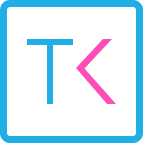BACKOFFICE
REDESIGN
Note: To respect the company's confidentiality, I have chosen not to mention its name. The focus is instead on the design process and my contributions to the project.
01. OVERVIEW
A new project, a new beginning
Role
UX Designer – internship
Target audience
Customer support staff
Tools
Figma
Team
Alexander Hansen, Programmer
Carl Hernek, Team Lead
Mårten, Stake Holder
Axel, Art Director
Time
4 months, Mars–June 2025
Problem
The existing system was outdated, and UX had not previously been prioritized. The content was overwhelming, with a large amount of information presented on a single page without clear structure. There was a lack of visual hierarchy, making it difficult for users to quickly scan and locate relevant information.
Goal
Create a modern, more visually appealing design
Restructure the page with clearer focus and hierarchy
Improve usability with clear CTAs and contrasts
Adapt the design to customer service staff workflows — especially regarding managing customer information
02. RESEARCH
Understanding is the key
In order to analyze the system and address the challenges that have arisen, I first needed to gain a deeper understanding of the system’s logic. Therefore, I created flowcharts of the current user journeys. This helped me identify which steps could be streamlined and what needed to be emphasized in the design.
No direct contact with the target audience
During this project, I did not have access to actual customer service users, which posed a challenge from a UX perspective.
Instead, I maintained a close dialogue with a stakeholder responsible for the system who also uses it regularly. This provided me with insights from an experienced user with deep system knowledge – although I was aware that their working methods differ somewhat from the actual target group (customer service staff).
To continue designing user-centered solutions, I utilized the information gathered from the stakeholder and combined it with a clear focus on user flows and priorities related to everyday tasks. I was also prepared to advocate for the target audience’s needs in cases where our perspectives diverged.
Interview
I began by interviewing the stakeholder to understand:
Which tasks the users (support/customer service) most often perform
Which features needed to be easily accessible right from the start
Results
The three most used features were:
A. Updating customer information (contact details)
B. Adjusting invoices and due dates
C. Cancelling memberships
03. DESIGN
Ideation
I focused on creating an overview page where users can directly manage the three main tasks (customer info, invoices, memberships) without having to click further. The goal was to reduce the number of steps and clicks users need to take before they can start their task, as well as to make it easier to find a CTA (call to action) by quickly scanning the page. Time is money — the faster users can start their task without frustration along the way, the quicker the task will be completed.
Wireframes
Early wireframes explored:
Which tabs were needed for more detailed pages
How information should be grouped on the overview
How the layout could avoid unnecessary scrolling, in line with the supervisor’s preferences
I prioritized a clean, modular interface where each module reflects a common user case.
Communication
During the design process, I shared a Figma file where the team could access my work and follow my progress. I created a dedicated page within the file specifically for the stakeholder, showcasing key examples and design iterations. We maintained ongoing communication by using Figma’s comment tool to discuss ideas, share feedback, and make decisions collaboratively along the way of this design process.
04. UI & BRANDING
What did it look like then and now?
Before
Existing interface with low hierarchy and many elements on one page. With all the content, the page becomes long to scroll through.
After
New structure with clear overview, prioritized tasks, and improved readability.
The thinking behind my solution
My thoughts mainly focused on how to structure the content so that the three main tasks would be accessible on a single page, allowing the user to reach their end goal with as few clicks as possible. In other words, an overview of the customer where the user can perform several tasks.
The initial sketches dealt with layout and content: Which tabs should I have? Where should they be placed? Then I started considering what should be included in the overview and what should be excluded. I also chose to avoid scrollable pages throughout the design, based on feedback from my supervisor.
05. REFLECTION
Reflection & Lessons Learned
Challenges:
Prioritizing information on the overview page without compromising readability
Making decisions without the possibility of A/B testing – I had to rely on the stakeholder’s insights instead
Lessons Learned:
The importance of understanding a system’s existing flows before redesigning
How to communicate effectively with stakeholders and developers
How to design with performance in mind – for example, avoiding heavy lists that delay loading times
I conducted most of the dialogue directly in Figma through comments, which made the feedback process quick and clear. The project strengthened my ability to present design decisions and adapt to technical constraints within a real workflow.
Ready to improve the user experience
together? I'm just a hello away.


















